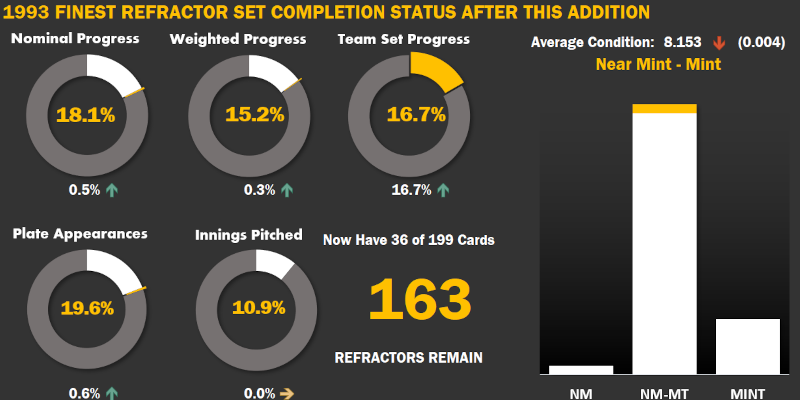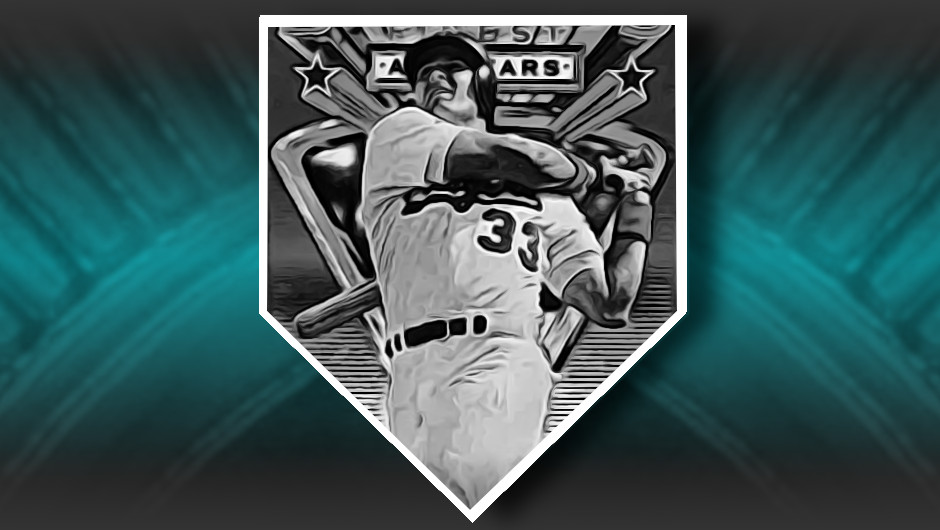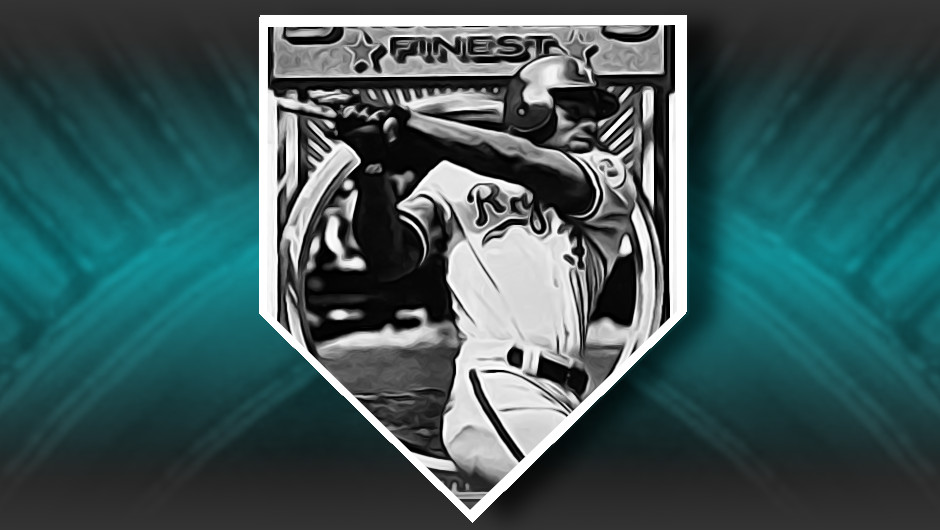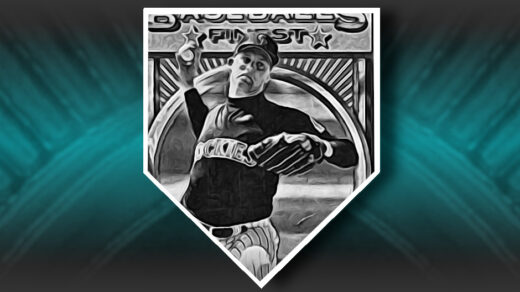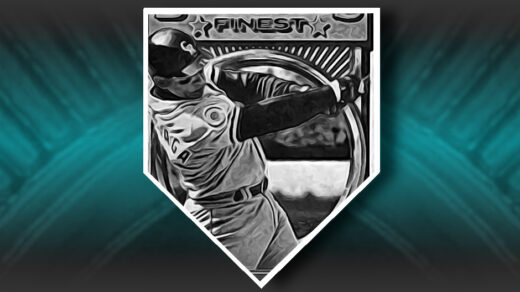Mickey Tettleton card #80, like the player it depicts, might be one of the most contradictory cards in the entire ’93 Finest set. You will not find anyone arguing that the card is anything more than a common. Tettleton’s bat had some pop in the late ’80s/early ’90s but never generated outsized collector interest like former teammates Mark McGwire, Cal Ripken, or Juan Gonzalez. His rookie cards can easily be found for the price of a postage stamp.
With that in mind, it seems a bit odd to hear of a card featuring the power-hitting catcher sell for four digits. In 2007 a Tettleton refractor appeared on eBay. Freshly graded as Gem Mint by PSA, it ignited a bidding war between several collectors trying to assemble the perfect refractor set. When the dust settled the card had sold for $3,000, an amount higher than almost any other refractor to that point.
Today the card still commands an occasional premium. Often plagued with centering issues, only two have been given perfect assessments by third party graders. Those in mint condition sell for a consistent but minor premium and 8’s frequently bounce back and forth from a zero to 100% premium to other commons.

Making the card more interesting are the ever present short print rumors that follow the set. The Tettleton card has fewer graded examples than most but is not terribly hard to locate today. That was not always the case, as one particular Detroit fan actively accumulated a substantial number of Tettleton cards in the late 1990s.
Tettleton Also Offered Contradictions
The Detroit catcher was distinctive in the batter’s box. His batting stance left him standing bolt upright with no sign of a crouch. He held the bat behind him, almost parallel to the ground. He gripped the bat with two fingers holding only air beyond the knob, reportedly to gain another inch of reach when he decided to swing. Always present was the second-biggest wad of chewing tobacco in the major leagues (Lenny Dykstra takes first place).
Tettleton struck out often. He struck out A LOT. In most years he appeared in the AL top ten for strike outs and his batting average (lifetime .241) reflected it. However, this doesn’t mean he didn’t have an eye for the strike zone. Tettleton walked in 2 out of every 3 games, eclipsing 100 in a season five different times. These opposing forces were the effect of a batter who patiently waited for a pitch to hit out of the park, letting everything that wasn’t launchable pass by regardless of placement. He could fit well in a rendition of Casey at the Bat.
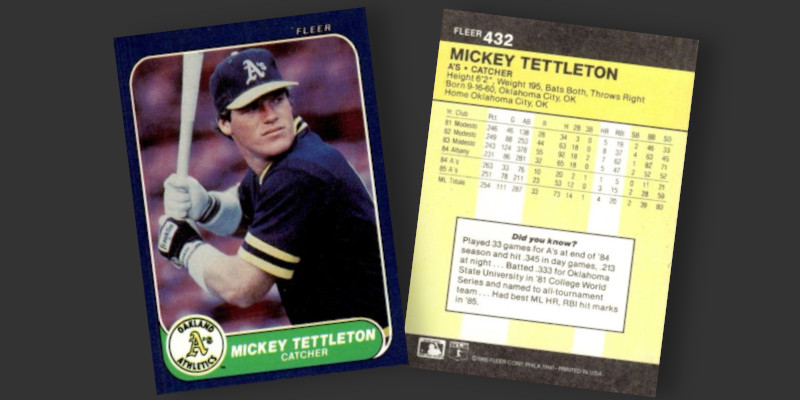
His 1986 Fleer rookie card, shown above, highlights another oddity. The back of the card shows his batting average was a heady .345 in day games and only .213 at night. By the end of his career this would even out, with Tettleton generating a .241 average in both situations. While he never hit for average, Tettleton actually batted .417 over the course of his career when taking the leadoff spot in the lineup (sample size = 9 games).
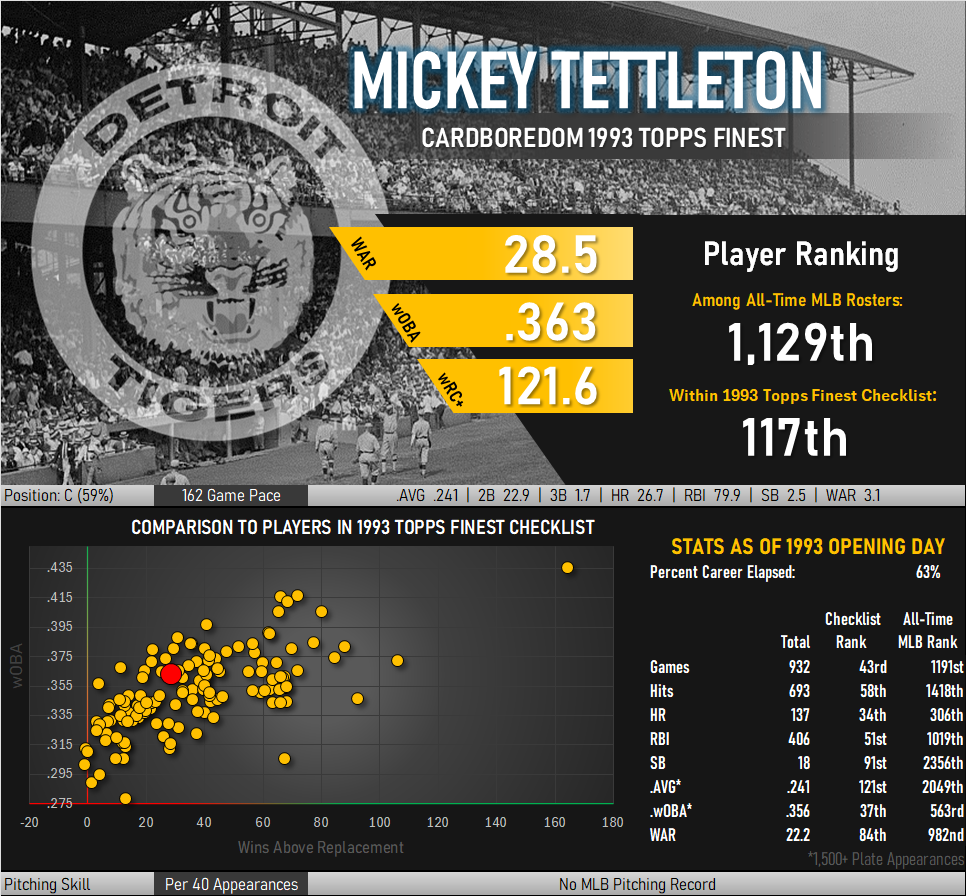
Tettleton was superstitious and would repeat little actions when he got on a hot streak. One of these rituals was feasting on Froot Loops before games. The cereal accompanied the rise in his home run production and the habit stuck. That was all the evidence I needed as a 10-year-old kid to stuff my face with sugary cereal before a game. Hyped up by the pre-game snack, I would also try to imitate his batting stance, simultaneously driving my Little League coach to exasperation.
